In this article:
Blackheads are the mildest, least inflammatory form of acne but they are extremely hard to get rid of.
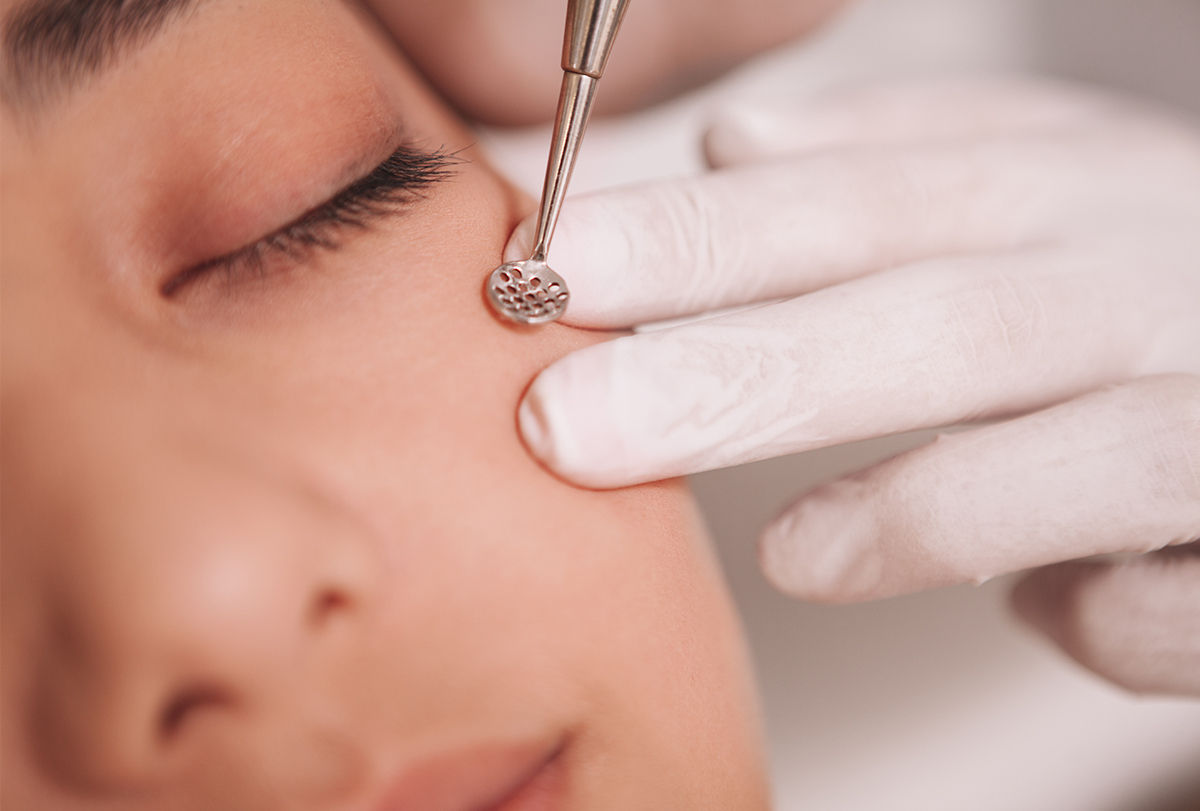
Although blackheads can appear anywhere on the skin where hair follicles are present, they are usually concentrated on the bridge and sides of your nose because the pores in these areas are relatively larger.
The larger the skin pore, the more likely it is to get plugged and form a blackhead.
Causes and Formation of Blackheads
Your epidermal skin is covered with tiny pores that have a hair growing within it and a sebaceous gland underneath it.
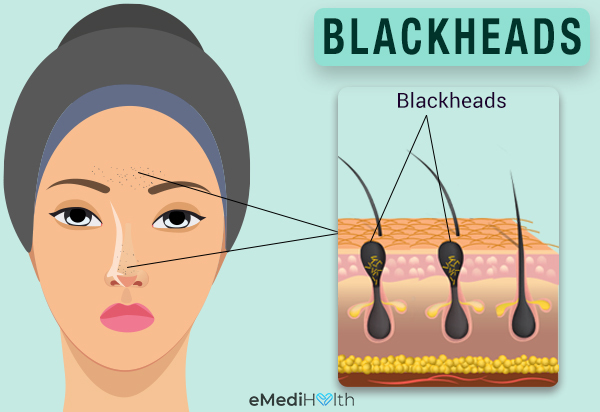
When the oil glands become overactive, they start to produce excess sebum, which combines with the sloughed-off dead skin cells within the hair follicle to form a clumped mass that plugs the pore. This allows bacterial overgrowth in the follicle. The congested pore is referred to as a comedo, which may have a closed or dilated opening.
In the case of open comedones, their content becomes exposed to the oxygen in the environment and undergoes a chemical reaction called oxidation. This process causes the sebaceous mix within the hair follicle to acquire a darker hue, which makes the center of the pore look almost black.
Additional Contributing Factors to Blackhead Formation
The following factors can also contribute to the development of blackheads:
- If you have naturally oily skin
- If the acne-causing bacteria (Propionibacterium acnes) react with the excess sebum within the plugged pores to produce increased amounts of free fatty acids
- If your skin becomes excessively hydrated due to the overuse of skin moisturizers, increased atmospheric humidity, or natural changes before the onset of menstruation
- If you expose your skin to certain chemicals such as isopropyl myristate, oily pomades, propylene glycol, and some dyes that are commonly found in cosmetic products
- If the male sex hormone 5-testosterone (DHT), which is present in your skin cells, becomes overactive
- If you always wear tight-fitting clothes
- If you are an active or passive smoker
- If you spend too much time in the sun without proper skin protection
- If you are on certain steroid-based medications such as cortisone, including over-the-counter cortisone
- If you sweat profusely
- If you are suffering from PCOS
- If you are prone to excessive stress
- If you use excessive cosmetics on your skin for extended periods or go to sleep with makeup on
- If people in your family are prone to blackheads
- If you use comedogenic makeup products
How to Identify a Blackhead
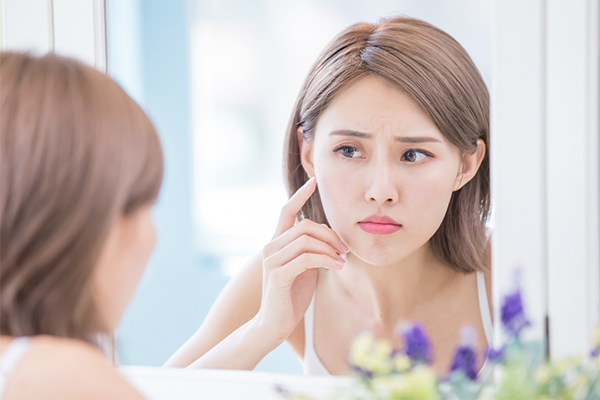
These are some of the defining characteristics of a blackhead:
Appearance
Unlike most acne lesions, blackheads are typically painless and headless. They become visible on the skin as slightly raised black bumps that are flatter than an inflammatory acne pimple or pustule.
Location
Although blackheads can develop anywhere on the body where there is a hair follicle, they usually appear on the top and sides of the nose, the forehead, and the chin.
Discomfort
The affected areas can become red and inflamed, especially if picked or scratched, resulting in painful inflammation.
How Are Blackheads Treated?
Your dermatologist will take into account your skin type and condition as well as the extent or severity of your blackheads before suggesting the appropriate treatment for you.
1. Topical ointment for blackheads
Your dermatologist may recommend “comedolytic” creams, ointments, or gels, which have to be applied topically to the affected skin once or twice a day.
Since these medications are usually quite strong, you must stick to the doctor-stipulated guidelines and dosage for application to avoid any adverse reactions.
The primary aim of this topical therapy is to prevent future breakouts rather than cure the condition. It can take 8–12 weeks to a full year for the treatment to bear results, but you must stay committed to the regimen.
Some of the commonly prescribed topical agents for comedonal acne include:
- Topical retinoids: tretinoin, isotretinoin, adapalene (doctor’s prescription needed)
- Salicylic acid (+/- sulfur and resorcinol)
- Benzoyl peroxide (helps certain skin types)
- Azelaic acid
- Glycolic acid
Some of these topical ointments may be available over the counter but it’s better to check with your doctor before using them.
2. Clinical procedures for blackhead removal
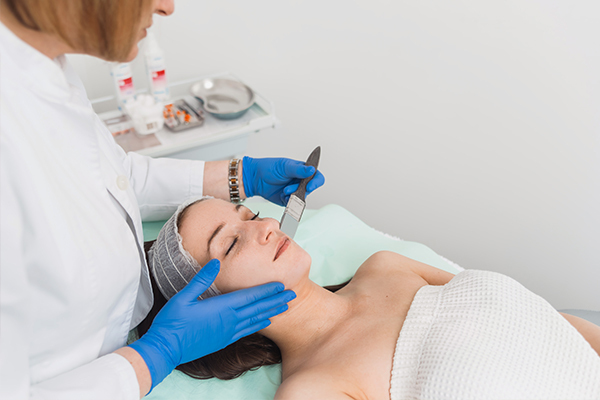
If the condition of your skin does not improve despite preliminary topical treatment, your dermatologist may consider other measures to physically remove the blackheads.
a. Acne extraction
Sterile instruments are used to pull out the contents of a clogged pore. For best results, you may have to go through a round of skin exfoliation prior to the treatment.
However, this newly cleaned pore can become congested again if you do not take proper care of your skin post-treatment.
b. Chemical peel
Chemical peels are acid-containing exfoliants used to improve the texture of your blackhead-ridden skin. A chemical solution is applied to the affected areas to stimulate cell turnover and thereby skin regeneration.
During this process, the dead, damaged surface layer of the skin is replaced by newly formed skin with tighter pores that are less likely to turn into blackheads.
According to a 2015 study published in the International Journal of Cosmetic Science, chemical peels that contain 4% AHA (alpha hydroxy acid) solution may help reduce the pore size and the total comedone count in the treated skin when used in conjunction with appropriate physical therapy. (1)
c. Microdermabrasion
Microdermabrasion uses the mild abrasive action of medical crystals to slough off the aging or damaged skin cells and, thereby, stimulate the growth of fresh layers of skin at the surface. This procedure can work for all genders and skin types as a means to improve overall skin quality and appearance.
d. Photopneumatic therapy
Your dermatologist may recommend a specific form of laser treatment called photopneumatic therapy to remove deep-rooted blackheads. An intense pulsed light (IPL) laser is used in combination with a gentle suction pull to draw out the excess sebum and skin debris from the clogged pores.
Photopneumatic therapy is a safe, FDA-approved technique for the elimination of blackheads, whiteheads, and some types of pimples, but it is not suitable for the treatment of acne nodules or cysts.
When to See a Doctor
You may need the help of a professional skin specialist/dermatologist:
- If proper skin care and home treatment fail to remove the blackheads
- If the blackheads keep recurring
- If the blackheads cause a lot of itchiness
- If the blackheads are so noticeable that they make you extremely conscious of your appearance and negatively impact your confidence
Expert Answers (Q&A)
Answered by Dr. Niyati Sharma, MBBS (Dermatology)
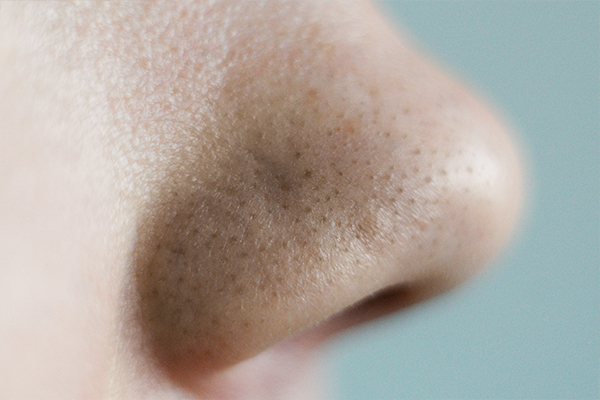
You can do that. However, it is best to use a topical retinoid to help in the long term. It aids in the reduction of the overall amount of blackheads.
No, you cannot do that physically.
Baking soda is a great ingredient to help with exfoliation (I mix it with coconut oil), but it will not get rid of blackheads. Once again, I advocate topical retinoids.
I have not heard of this, but I would advise against applying lemon juice. If you go out in the sun, you may get a photosensitive reaction on your skin.
It should reduce because the skin becomes less oily as age increases. Older people get more giant ones, though (frequently on the back).
As mentioned earlier, go and get yourself some vitamin A, retinoid cream. Your dermatologist can prescribe you the strongest ones but start first with adapalene.
Final Word
Scratching, scrubbing, or picking a congested pore to unclog it can be counterproductive as doing so can leave you with unnecessary skin scarring. But if left untreated, these blackheads can trigger a full-blown acne breakout.

- Was this article helpful?
- YES, THANKS!NOT REALLY


